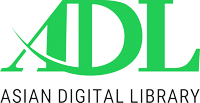Bridging gaps: Socio-Emotional development and academic achievement of students with visual impairments in inclusive and segregated schools of Punjab
DOI:
https://doi.org/10.71085/sss.04.04.361Keywords:
Socio-emotional Development, Academic Achievement, Visual Impairment, Inclusive Education, Segregated Schools, Pakistan, Mixed-Methods ResearchAbstract
The researcher examines the connection between the self-concept among the visually impaired learners and their academic performance in integrated and segregated learning institutions in Punjab in Pakistan. The mixed-method design was used that included semi-structured interviews, structured questionnaires, and standardized achievement tests. Self-esteem, peer relationships and psychological well-being were key variables and objective measures of academic success that comprised grades, attendance and test results. It found that Inclusive schools could have more opportunities to use in sociocultural integration and skill usage in real-life practice; yet, they are not necessarily equipped with specialized resources that could be found at segregated schools. On the other hand, in segregated schools there can be a higher level of personalized support and specialized equipment but students can be inadvertently deprived of the larger peer community. The implication of these findings is that resilience, peer acceptance, and positive interactions with the educator are some of the key determinants of success. Policy makers, therefore, need to look at making changes in policies, teacher training programs and school curricula to minimize systemic obstacles. Overall, the current results suggest that there should be the adoption of fair practices and uniform standards to students with visual impairments
Downloads
References
Ahmad, A., Khan, S., & Rauf, M. (2024). Inclusive education practices in Pakistan: Challenges and future directions. Journal of Special Education Research, 18(2), 45–59.
Ališauskienė, S., & Ungeitytė, L. (2023). Social-emotional competence as a predictor of school success among students with disabilities. International Journal of Inclusive Education, 27(5), 678–692.
Amzad, N. (2020). Gender differences in academic achievement and socio-emotional learning in South Asian schools. Asian Journal of Education and Development, 12(3), 88–102.
Bandura, A. (1997). Self-efficacy: The exercise of control. New York, NY: Freeman.
Bertills, K., Ring, M., & Holmgren, R. (2019). The importance of special support and inclusive education for students with disabilities. European Journal of Special Needs Education, 34(3), 327–344.
Black, R. (2018). Education for all: Rights, realities, and challenges. International Review of Education, 64(4), 511–528.
Boelen, M. (2018). Teacher attitudes toward inclusive education: A critical factor in success. Teaching and Teacher Education, 72, 205–214.
Bronfenbrenner, U. (1979). The ecology of human development: Experiments by nature and design. Cambridge, MA: Harvard University Press.
CASEL. (2018). Core SEL competencies. Collaborative for Academic, Social, and Emotional Learning. https://casel.org/core-competencies/
Denham, S. A., Weissberg, R. P., & Durlak, J. A. (2003). Social-emotional learning: Promoting the development of all students. Educational Psychologist, 38(2), 81–91.
Douglas, G., McLinden, M., & Farrell, A. (2019). Specialized versus inclusive provision for visually impaired learners: A comparative perspective. British Journal of Visual Impairment, 37(2), 111–126.
Gelber, D., Lusardi, R., & Sharma, P. (2021). Global perspectives on inclusive education: Toward equity and access. International Journal of Educational Development, 81, 102352.
Grumi, S. (2021). Applying social cognitive theory to disability and inclusive education. Disability & Society, 36(7), 1030–1045.
Huurre, T. (1998). Psychological well-being of adolescents with visual impairments. Journal of Visual Impairment & Blindness, 92(5), 323–334.
Iqbal, A., Javed, M., & Hussain, S. (2023). Methodological challenges in special education research in Pakistan. Pakistan Journal of Education, 40(1), 53–72.
Jahanzaib, M., Ali, S., & Farooq, R. (2023). Inclusive education in Pakistan: From policy to practice. South Asian Studies, 39(2), 213–229.
Jones, S. M., & Kahn, J. (2018). The evidence base for how we learn: Supporting students’ social, emotional, and academic development. Consensus Statement of the National Commission on Social, Emotional, and Academic Development. Aspen Institute.
Krisi, K., Nagar, S., & Patel, D. (2022). Academic outcomes of students with low vision: Inclusive versus segregated schools. Journal of Disability Studies, 15(4), 199–210.
Kumar, R. (2013). Inclusive classrooms and the social development of children with disabilities. International Journal of Special Education, 28(1), 1–14.
Kuzdeuov, A., Manitsa, S., & Brown, T. (2024). Segregated schooling and the social integration of students with disabilities: A critical analysis. International Journal of Disability, Development and Education, 71(3), 356–372.
Lang, J. (2017). Applying ecological systems theory to inclusive education research. Educational Review, 69(2), 158–174.
Li, L., & Cheung, C. (2021). Inclusive education for students with low vision: Barriers and facilitators. International Journal of Special Education, 36(1), 55–67.
Malik, S., Abd Manaf, N., & Hussain, A. (2018). Family influence on the education of children with disabilities in Pakistan. Journal of Family Studies, 24(4), 425–441.
Manitsa, I., & Barlow-Brown, F. (2022). Socio-emotional challenges of visually impaired students in inclusive education. British Journal of Special Education, 49(3), 331–349.
Morris, J., & Smith, D. (2008). Mainstream schooling for children with visual impairment: Lessons from the UK. British Journal of Visual Impairment, 26(2), 145–157.
Narwal, R., & Sharma, A. (2021). Social-emotional development and its role in academic outcomes. Indian Journal of Psychology and Education, 11(2), 101–113.
Narwal, R., Singh, K., & Sharma, P. (2021). Resilience and persistence as predictors of academic success. Journal of Educational Psychology, 113(5), 918–929.
Nazir, A., & Khurshid, F. (2016). Barriers to inclusive education in Pakistan: A teacher perspective. Bulletin of Education and Research, 38(2), 133–148.
Saloviita, T. (2020). Teacher attitudes toward inclusion in Finland: A challenge to inclusive reform. International Journal of Inclusive Education, 24(1), 54–66.
Sankhi, D., & Sandnes, F. E. (2020). Global prevalence of childhood visual impairment and implications for education. Disability and Health Journal, 13(3), 100875.
Santa Cruz, M., Estevez, L., & Lopez, R. (2021). Peer relationships of students with visual impairments in mainstream schools. Journal of Visual Impairment & Blindness, 115(4), 287–298.
Schneider, S., Brown, K., & Lee, J. (2022). Teacher preparation for inclusive classrooms: Ethical and professional responsibilities. Journal of Teacher Education, 73(5), 589–602.
Schuelka, M. (2018). The evolving concept of inclusive education: A global overview. Prospects, 48(3–4), 1–15.
Shapira, N. (2022). Inclusive education research: Limitations and future directions. International Review of Education, 68(4), 465–482.
Sultana, R., Ali, H., & Bashir, S. (2020). Challenges of inclusive education in Pakistani schools. Journal of Research and Reflections in Education, 14(1), 88–101.
Downloads
Published
Data Availability Statement
The data that support the findings of this study are available from the corresponding author upon reasonable request.


































